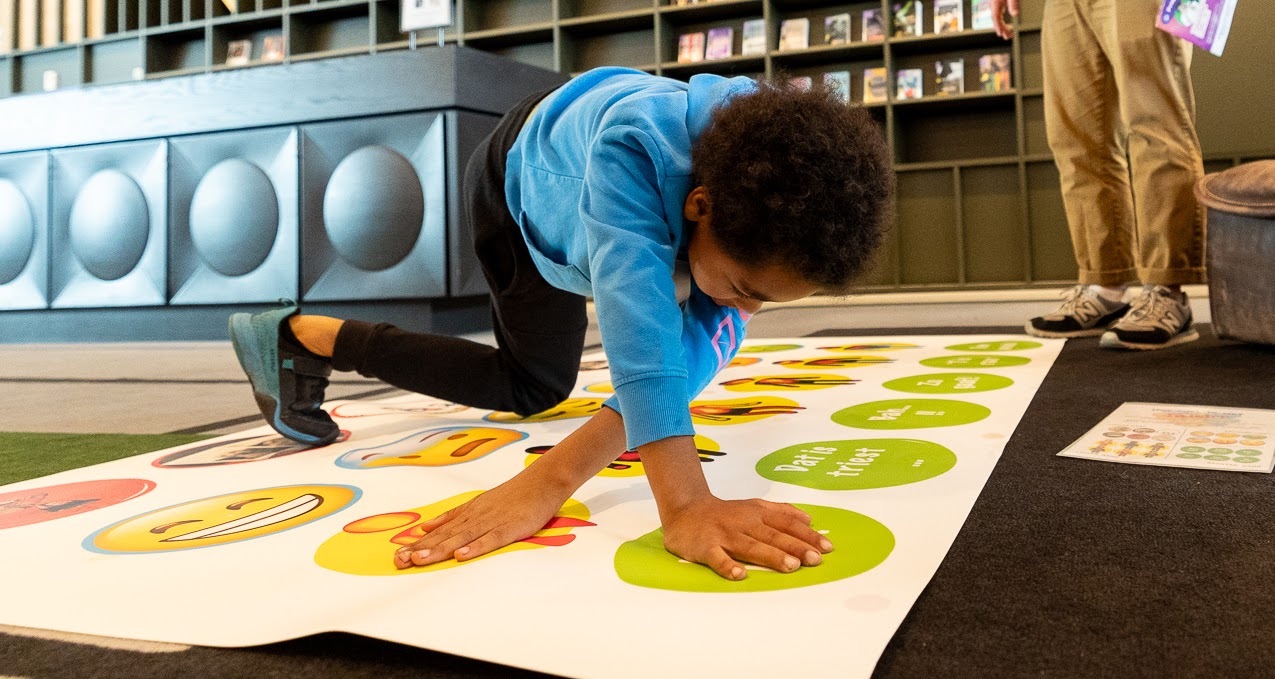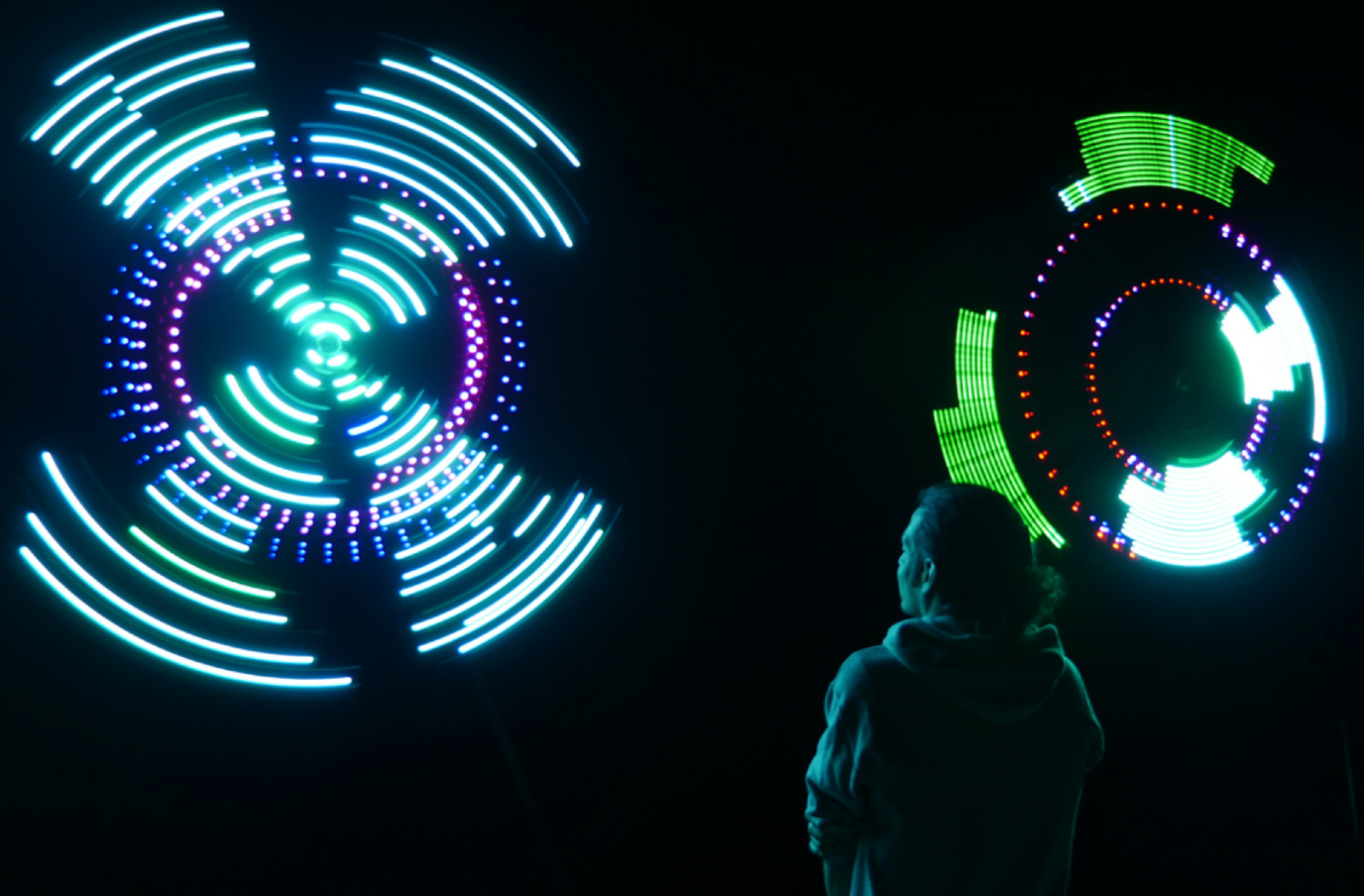Ralf Cox onderzoekt hoe mensen kunst ervaren

Wat doet kunst met mensen? Deze vraag staat centraal in het onderzoek van Ralf Cox en zijn collega’s. In musea en in hun onderzoekslab onderzoeken ze de verschillende reacties die kunst bij mensen oproept. In de winter van 2023 staat een grote publieksmeting op het Amsterdam Light Festival op de planning.
Bewondering. Kippenvel. Inspiratie. Vervoering. Maar ook boosheid. Afkeer. Onbegrip. Irritatie. Het zijn maar een paar voorbeelden van de reacties die kunst kan oproepen. Ralf Cox en zijn collega’s Lisa-Maria van Klaveren, Gemma Schino en Héctor Gallegos González doen onderzoek naar zulke kunstervaringen. Ze kijken daarbij naar wat mensen denken en voelen als ze een kunstwerk zien, maar ook naar lichamelijke reacties. Cox: “Kunstervaringen zijn geen één-dimensionale dingen die je kunt platslaan tot een enkel kenmerk. Daarom kijken wij naar cognitieve, emotionele, lichamelijke en sociale aspecten. Deze aspecten zijn allemaal onderdeel van de kunstervaring en worden te weinig in samenhang onderzocht.”
Breed arsenaal
Om recht te doen aan de complexe aard van een kunstervaring, gebruiken Cox en zijn collega’s een breed arsenaal aan onderzoeksmethoden. Dit doen ze zowel in hun onderzoekslab als in musea. “We laten bijvoorbeeld mensen vragenlijsten invullen over emoties, esthetische waardering en lichamelijke sensaties. Maar we doen ook allerlei lichaamsmetingen zoals hartslag, lichaamsbewegingen en hersenactiviteit. Daarnaast zijn we aan het verkennen of we ook meetmethodes kunnen gebruiken die gebaseerd zijn op meer artistieke en alternatieve manieren van expressie. Zoals het maken van een tekening, het gebruiken van gebaren, en voor kinderen zelfs het spel Twister waarop ze kunnen laten zien wat ze voelen en ervaren.”

Lichaam en beweging
Een van de interessantste bevindingen vindt Cox de bevinding dat kunst invloed op je lichaam en manier van bewegen heeft. “We zagen dat de verschillende emoties die door kunstwerken worden opgeroepen als sensaties op verschillende plekken in het lichaam worden gevoeld. Zo vonden we dat ‘kunst-emoties’ samengaan met verhoogde activatie in het hoofd. Ook zagen we dat de manier waarop mensen bewegen als ze voor een schilderij staan, afhangt van het type schilderkunst. De subtiele schommelingen die we maken als we staan, zijn chaotischer als we naar een ‘action painting’ schilderij van Jackson Pollock kijken dan wanneer we naar de ‘simpele’ geometrische vormen in een schilderij van Piet Mondriaan kijken. Interessant is dat de intensiteit van die bewegingen, dat wil zeggen hoe ruim en chaotisch ze zijn, samenhangt met de emoties en waardering voor de werken.”
Mannen en vrouwen
Lopend onderzoek van Cox en zijn groep doet vermoeden dat onze verbale en lichamelijke uiting van kunstervaringen ingekaderd worden door hoe we over gender denken. “We vroegen proefpersonen naar afbeeldingen van schilderijen te kijken terwijl hun lichaamsbewegingen gemeten werden. Na ieder schilderij bespraken ze hun kunstervaring. Daarnaast vroegen we ze na afloop hoezeer ze aan zichzelf ‘typisch’ mannelijke en vrouwelijke eigenschappen toeschrijven en hoe ze over genderrollen denken. We vonden dat de bewegingen voor de schilderijen net wat intenser zijn bij vrouwen dan bij mannen. Dit verschil kan veroorzaakt worden doordat mannen en vrouwen nou eenmaal anders bewegen. Maar bij mannen wordt het verschil in bewegingsintensiteit tussen de als laagst en hoogst beoordeelde ervaringen mede bepaald door hoe mannelijk ze zichzelf vinden.”
Nooit hetzelfde
Wat het onderzoek van Cox naar eigen zeggen uitdagend maakt, is dat je hetzelfde kunstwerk altijd weer anders ervaart. “Een bekende Griekse wijsheid is: ‘Men kan nooit twee keer in dezelfde rivier stappen’. Dat geldt ook voor kunst. Of het nou om een schilderij, een muziekstuk of een kunstobject op een plein gaat: de impact die kunst op je heeft, is altijd weer net iets anders. Dat komt omdat je zelf altijd iets anders bent en omdat de situatie altijd net iets anders is. Wat je weet van het kunstwerk of van de artiest verandert, je gemoedstoestand is niet iedere dag hetzelfde, en met wie je bent varieert. Maar ook het licht, de details die je aandacht trekken en de verbanden die je kunt leggen ertussen zijn geen constante.”

Amsterdam Light Festival
Cox kijkt uit naar de winter van 2023. Dan zal hij samen met zijn team een grootschalige publieksmeting gaan doen op het Amsterdam Light Festival (ALF). “We gaan dan onderzoeken hoe mensen lichtkunstwerken ervaren en hoe deze hun gedachten en emoties beïnvloeden. Bezoekers gaan onder andere via hun mobiele telefoon vragen beantwoorden over het Amsterdam Light Festival en over het thema van dit jaar ‘Revealing Art, AI and Tech’. De samenwerking met ALF biedt ons een unieke kans om bij een groot aantal mensen in kaart te brengen hoe ze deze bijzondere lichtkunstwerken ervaren en hoe ze de invloed van technologie en AI in hun leven en in de kunst zien. We zijn erg benieuwd wat dat voor inzichten zal opleveren.”
Meer informatie
- Profielpagina Ralf Cox
- Website van de Interface for Measuring the Experience and Meaning of Art (iMEMA) onderzoeksgroep
- Meer informatie over het Amsterdam Light Festival
Meer nieuws
-
08 december 2025
Burgerparticipatie onmisbaar voor een duurzame energietoekomst
-
23 oktober 2025
Negen wetenschappers van de RUG ontvangen Vidi-beurs


